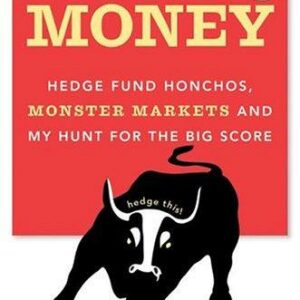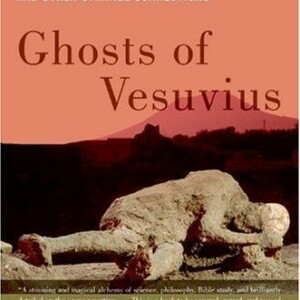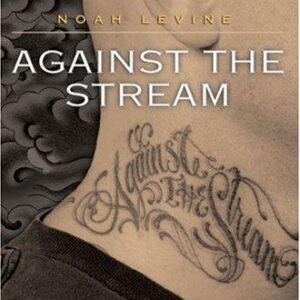AN Organizer’s Tale
$16.00
| Title | Range | Discount |
|---|---|---|
| Trade Discount | 5 + | 25% |
- Description
- Additional information
Description
The first major collection of writings by civil rights leader Cesar Chavez
One of the most important civil rights leaders in American history, Cesar Chavez was a firm believer in the principles of nonviolence, and he effectively employed peaceful tactics to further his cause. Through his efforts, he helped achieve dignity, fair wages, benefits, and humane working conditions for hundreds of thousands of farm workers. This extensive collection of Chavez’s speeches and writings chronicles his progression and development as a leader, and includes previously unpublished material. From speeches to spread the word of the Delano Grape Strike to testimony before the House of Representatives about the hazards of pesticides, Chavez communicated in clear, direct language and motivated people everywhere with an unflagging commitment to his ideals.
For more than seventy years, Penguin has been the leading publisher of classic literature in the English-speaking world. With more than 1,700 titles, Penguin Classics represents a global bookshelf of the best works throughout history and across genres and disciplines. Readers trust the series to provide authoritative texts enhanced by introductions and notes by distinguished scholars and contemporary authors, as well as up-to-date translations by award-winning translators.”[Cesar Chavez is] one of the heroic figures of our time.”
-Senator Robert F. KennedyIlan Stavans is Lewis-Sebring Professor in Latin American and Latino Culture at Amherst College and the author or editor of numerous books.
PENGUINCLASSICS
AN ORGANIZER’S TALE
CESAR CHAVEZ was a civil rights and labor leader, a farmworker, a crusader for nonviolent social change, and an environmentalist and consumer advocate. He was born on March 31, 1927, near his family’s farm in Yuma, Arizona. His family lost their farm in the Great Depression and became migrant farm workers when Chavez was ten. Throughout his youth and into his adulthood, he migrated across the Southwest, laboring in the fields and vineyards, where he was exposed to the hardships and injustices of farmworker life. After achieving only an eighth-grade education, Chavez left school to work in the fields full-time to support his family. He joined the U.S. Navy in 1946 and served in the western Pacific in the aftermath of World War II. Chavez’s life as a community organizer began in 1952 when he joined the Community Service Organization (CSO), a prominent Latino civil rights group. While with the CSO, he coordinated voter registration drives and conducted campaigns against racial and economic discrimination primarily in urban areas. In the late 1950s and early 1960s, Chavez served as CSO’s national director.
In 1962, he resigned from the CSO to found the National Farm Workers Association, which later became the United Farm Workers of America. For more than three decades Chavez led the first successful farmworkers union in American history, achieving dignity, respect, fair wages, medical coverage, pension benefits, and humane living conditions for hundreds of thousands of farmworkers. Chavez led successful strikes and boycotts that resulted in the first industry-wide labor contracts in the history of American agriculture. His union’s efforts brought about the passage of the groundbreaking 1975 California Agricultural Labor Relations Act to protect farmworkers. Today it remains the only law in the nation that protects the farmworkers’ right to unionize.
A strong believer in the principles of nonviolence practiced by Mahatma Gandhi and Dr. Martin Luther King Jr., Chavez effectively employed peaceful tactics such as fasts, boycotts, strikes, and pilgrimages. In 1968 he fasted for twenty-five days to affirm his personal commitment and that of the farm labor movement to nonviolence. He fasted again for twenty-five days in 1972, and in 1988, at the age of sixty-one, he endured a thirty-six-day “Fast for Life” to highlight the harmful impact of pesticides on farmworkers and their children. Chavez died on April 23, 1993, in San Luis, Arizona.
ILAN STAVANS is the Lewis-Sebring Professor in Latin American and Latino Culture and Five-College 40th Anniversary Professor at Amherst College. His books include The Hispanic Condition (1995), The Riddle of Cantinflas (1998), The Essential Ilan Stavans (2000), On Borrowed Words (2001), Spanglish (2003), Dictionary Days (2005), The Disappearance (2006), and Love and Language (2007). He is the editor of, among other works, Growing Up Latino (1994), The Oxford Book of Latin American Essays (1998), and The Poetry of Pablo Neruda (2003). He is the recipient of numerous awards and honors, including a Guggenheim Fellowship, the Latino Hall of Fame Award, Chile’s Presidential Medal, the Rubén Darío Medal, and the National Jewish Book Award. Stavans writes a newspaper column syndicated throughout the Spanish-speaking world.
CESAR CHAVEZ
An Organizer’s Tale
SPEECHES
Edited with an Introduction by
ILAN STAVANS
PENGUIN BOOKS
Introduction byILAN STAVANS
Suggestions for Further Reading
Chronology
A Note on the Text
AN ORGANIZER’S TALE
We Shall Overcome
On the NFWA
A Penitential Procession
The Plan of Delano
An Organizer’s Tale
Recapping the Mission
Marcher
An Age of Miracles
Chicanos and the Church
After the Fast
Before the Senate Committee on Labor and Public Welfare
Good Friday Letter
Creative Nonviolence
Before the House of Representatives
The Union and the Strike
Sharing the Wealth
No More Cathedrals
At Harvard
Jesus’s Friendship
An Assortment of Responses
Forty Acres
Twenty Days in Jail
Nothing Has Changed
At Riverside Church
At Exposition Park
On Money
Why Delano
To Be a Man Is to Suffer for Others
Do We Exist?
Regaining the Strength
Nan Freeman
Juan de la Cruz
In Coachella
After a Bus Accident
Before the Automobile Workers
The Chavez Mystique
Martin Luther King Jr., I
Martin Luther King Jr., II
Rufino Contreras
What Is Democracy?
René López
Before the 7th UFWA Constitutional Convention
At the Commonwealth Club of San Francisco
Wrath of Grapes
At Pacific Lutheran University
On Public Schools
Sal Si Puedes
Juana Estrada Chavez
Fred Ross
Aphorisms
Introduction
“The end of all knowledge should be service to others,” Cesar Chavez once said. He ought to know. A man of deep faith, he spent his life organizing people, in particular mexicanos, hoping to better their lot. From his humble beginning in Arizona as a migrant worker to his rise in status of national idol, his mantra was familiar: justice, equality, and the pursuit of happiness. Poverty was his prime target. Farmworkers, he often argued, are involved in the planting, cultivating, and harvesting of an abundance of food. Isn’t it ironic, then, and even tragic, that they don’t have enough food to feed themselves? To be aware of the miserable labor conditions of migrants and not do anything was to become an accomplice. Nobody should be forgotten in America.
Chavez belongs to a time, the latter half of the twentieth century, when the United States underwent a profound demographic makeover, which itself opened up a reevaluation of the nation’s collective identity. For centuries, the United States had accepted immigrants from the Old World (Ireland, Germany, Scandinavia, Italy, France…), but after World War II the waves of newcomers from the so-called Third World intensified. This trend started with the Spanish-American War of 1898, but only in the 1950s did it become apparent that a different type of ethnic ingredient was now present. Mexicans, Puerto Ricans, and Cubans, to name only three Spanish-speaking groups, dramatically increased their numbers from midcentury onward, as did Filipinos, Chinese, Nigerians, Senegalese, and Francophone Caribbean peoples. Their arrival announced a redrawing of the political map and a reconfiguration of the culture as a whole. A different type of leader was needed, one capable of drawing attention to the plight of a heterogeneous underclass.
Chavez’s maturity as a speaker representing the undocumented indigents in the fields coincided with the civil rights ferment. Time and again, he emphasized that the anxiety of the era wasn’t exclusively about the deteriorated relations between whites and blacks, as it’s still being perceived today. It was about another type of American, an invisible, silent one who performed menial jobs for a pittance. His quest, then, was two-pronged: improve working conditions and recognize the protean quality of the nation’s ethnic mosaic. He wanted people to concede that the United States now lived in Technicolor.
Named after his grandfather, Cesario Estrada Chavez was born to Librado and Juana Chavez on March 31, 1927, on a small farm near Yuma, Arizona. On August 29, 1937, when Chavez was ten years old, the state took possession of the family ranch, which they had owned since the 1880s. A year later, Librado Chavez left home with several relatives to look for work in California, where he found a job threshing beans in Oxnard, a small town near the coast an hour north of Los Angeles. Librado wrote home to Juana telling her to come with the children. Thus, the Chavezes became a family of migrant workers.
The physical conditions of itinerant labor were awful—and, to a large extent, they still are today. Workers, adults and children alike, labored fifteen-hour shifts under the inclement sun. They moved seasonally from one state to another, from field to field, depending on need. Payment per hour was notoriously low, way under the minimum wage. No benefits were granted. Housing, too, was sparse. Families of six to eight members lived in a single room without a toilet. Worse even was the degrading attitude of the employers, for whom the Mexicans were simply subhuman, one individual indistinguishable from another.
Interest in the farmworkers’ plight as a national issue began in the late thirties and early forties. Fred Ross and some other followers of Saul Alinsky (the author of Reveille for Radicals and considered the father of community organizing, responsible for the organizing of the Back of the Yards neighborhood in Chicago, which appears in Upton Sinclair’s The Jungle) looked away from major metropolitan areas to the countryside as their theater of action. There was also concern among intellectuals and in the media. Carey McWilliams, an editor of The Nation, was captivated by the changes under way in the state of California. He was also gripped by the atrocious circumstances in which migrant labor lived. McWilliams published a couple of seminal works connecting the two topics: Factories in the Field and Ill Fares the Land. Likewise, Edward R. Morrow, the radio and TV anchorman known as the face of CBS News, who later went after Wisconsin senator Joseph McCarthy, made migrant workers a focus of his coverage.
As was the case with all migrant children, Chavez’s schooling was a series of interruptions. Overall, he attended some thirty elementary and middle schools. The experience left him scarred. In an interview with Jacques E. Levy, part of Autobiography of La Causa, he said that getting to school was a chore. “I never liked it,” he maintained:
They made me go, so I went, but they always had to push me to go. It wasn’t the learning I hated, but the conflicts. The teachers were very mean. I also didn’t like sitting in the class-room. I was bored to death. I’d just go to sleep. Once the teacher even sent a note home saying I was ill, that I had to be taken to the doctor because I was always falling asleep.
Chavez was part of a generation of Mexican Americans (the term “Chicano,” in circulation since 1937, became fashionable in the sixties) for which Mexico was the country of their past, where their heritage lay. But, having crossed the border, his parents became an integral part of the fabric of the United States. He spoke unschooled Spanish, but, as he later recalled, teachers insisted migrant children learn English. “They said that if we were American, then we should speak the language, and if we wanted to speak Spanish, we should go back to Mexico.”
Throughout his life, he remained loyal to el español. Of the scores of transcriptions of his speeches collected in the Farm Workers Archive at Walter P. Reuther Library, at Detroit’s Wayne State University, a handful are in Spanish. Some, like “Peregrinación, penitencia, revolución,” a rendition of the legendary piece “The Plan of Delano,” have been published. Associates lent him a hand in the endeavor. The extent to which Chavez was able to write freely in Cervantes’s tongue is debatable. In any case, by then he already recognized the value of articulating one’s thoughts coherently. “A language,” he said, “is an exact reflection of the character and growth of its speakers.”
In a way, the tension between his two languages, Spanish and English, was a symptom of Chavez’s dual status, which troubled him deeply. Was he an American, like all the white kids in the different schools he attended? It seemed to him that his Mexicanness—la mexicanidad, in Spanish—conferred a second-class status. That status, in his mind, was intricately linked to work. As John Steinbeck’s novel The Grapes of Wrath, about a fictional family of Dust Bowl refugees, eloquently portrays, the crash of 1929 turned a vast number of people in the Southwest into drifters.
Life for migrant workers meant no home, no secure job, not even the promise of food after a day in the fields. It was a nerve-wracking existence. Families felt uprooted; the Chavezes, and hundreds of others like them, didn’t belong anywhere. He looked back on his early years as a period of anxiety and was appalled by how widespread the sense of deprivation was. In “An Organizer’s Tale,” one of Chavez’s most introspective pieces, he stated: “There are vivid memories from my childhood—what we had to go through because of low wages and the conditions, basically because there was no union.” He added: “I went through a lot of hell, and a lot of people did.” Actually, the lack of a union (el sindicato) was, in retrospect, a feature of his ordeal. Chavez recognized that lack when, in 1941, at the age of fourteen, he first encountered a union. Members of the CIO (Congress of Industrial Organizations) came to his house to talk to Librado and his brother about organizing with other workers.
After the eighth grade, he quit school and worked in the fields to help support the family. World War II was under way and Chavez, like thousands of other mexicanos, was ready to serve his country. He wanted to flee from the harsh working conditions that beat him down day after day—heat, exhaustion, boredom, and under-payment. In 1946, once the war was over, he joined the navy as a deck hand. He served in the western Pacific.
In the forties, when the Chavez family was living in Delano, signs that read “No dogs or Mexicans allowed!” weren’t uncommon. The Zoot Suit Riots and the Sleepy Lagoon Murder are representative of the ethnic volatility in California at that time. In a cauldron of racial hostility, the movie theaters were segregated. The left-hand side was reserved for Anglos and Japanese customers. Just before departing for his service in the Pacific, in a move fore-shadowing Rosa Parks’s courage a decade later in Alabama, Chavez defied the ban. When the authorities asked him to give up his seat, he refused. He didn’t put up a fight. It would be his first stay in prison.
Two years later, Chavez married Helen Fabela, whom he had met while working the vineyard fields in San Jose, California. Together they had eight children. The family moved to San Jose and lived in a neighborhood nicknamed Sal Si Puedes (in Spanish, “escape if you can”), where they joined the congregation of Father Donald McDonnell. It was through Father McDonnell that Chavez began to read voraciously and became mesmerized by St. Francis, who preached absolute humility, and Mahatma Gandhi’s philosophy of nonviolence captured Chavez’s imagination. He became familiar with the Encyclicals and discovered the transcripts of the so-called La Follette Civil Liberties Committee on Education and Labor, chaired by Wisconsin senator Robert M. La Follette Jr., which investigated free-speech and labor-rights violations between 1936 and 1941.
Among the countless findings of the committee was evidence of the disruption of union activities, the disruption of strikes, and the formation of spy networks and secret police systems to monitor workers. Such systems, it concluded, place “the employer in the very heart of the union council from the outset of any organizing effort. News of organizers coming into a town, contacts the organizers make among his employees, the names of employees who join the union, all organization plans, all activities of the union—these are as readily available to the employer as though he himself were running the union.” Chavez was shocked by what he found. Simply put, the freedom of the average American worker was in question.
Was there shame in being poor? Not in Chavez’s eyes. But there wasn’t any pride either. The country didn’t seem to recognize the rights of the underclass. It preferred to look elsewhere. The American Dream worked insofar as it utterly rejected poverty. The objective was to leave it behind, to become successful. But the logic of the dream was false, for in a society constantly infused by immigrants, there would always be someone at the bottom. Furthermore, capitalism isn’t about equality. It’s a system designed for individuals to flourish. The poor, and Chavez himself was among them, need to find their reservoir of dignity and self-confidence. These ruminations led Chavez to expound an argument in favor of social justice. In an essay he published in Playboy in 1970, he wrote:
Nothing is going to happen until we, the poor, can generate our own political and economic power. Such a statement sounds radical to many middle-class Americans, but it should not. Though many of the poor have come to see the affluent middle class as its enemy, that class actually stands between the poor and the real powers in this society—the administrative octopus with its head in Washington, the conglomerates, the military complex. It’s like a camel train: The herder, way up in front, leads one camel and all the other camels follow. We happen to be the last camel, trudging along through the leavings of the whole train. We see only the camel in front of us and make him the target of our anger, but that solves nothing. The lower reaches of the middle class, in turn, are convinced that blacks, Mexican Americans, Puerto Ricans, Indians and poor whites want to steal their jobs—a conviction that the power class cheerfully perpetuates. The truth of the matter is that, even with automation, there can still be enough good-paying jobs for everyone in this country. If all of us were working for decent wages, there would be a greater demand for goods and services, thus creating even more jobs and increasing the gross national product. Full and fair employment would also mean that taxes traceable to welfare and all the other hidden costs of poverty—presently borne most heavily by middle-income whites—would inevitably go down.
In June 1952, while working in an apricot orchard outside San Jose, Chavez met Fred Ross. It was a fateful moment. Ross, the founder of the Community Service Organization (CSO), was an outsider whose calling was improving labor conditions, and he was very much aware of the substantial number of mexicanos working in the fields in California, Texas, Colorado, and Arizona. He was looking to recruit an insider not only able to speak Spanish but to communicate with Mexican workers on their own terms.
In Conquering Goliath, Ross wrote about Chavez’s beginnings. He details their first encounters, the conversations they had, and the early struggles before Chavez became a national figure. The book is a humble memoir focusing on the confrontation, in 1958, between a small number of farmworkers pitted against some two hundred growers supported by the government. In a poignant section, Ross describes Chavez’s reluctance to get involved in organizing people, mainly because the approach came from outside the community:
Cesar found out, years before, that whenever a Gringo wanted to meet you, look out! In those days, Sal Si Puedes was right in the path of a stream of college people coming down from Berkeley and Stanford to write their theses about the barrio. They would ask insulting questions like “How come the Mexican-Americans have so many kids? And how come they all eat beans and chile?” Then they would all go back and become professors and teach their students how to go down to the barrio and write their theses.
So Cesar thought I was one of them, he told me later. Except he wasn’t completely sure about it because I had this old beat-up car and wore wrinkled clothes.
Ross sums up Chavez’s adventures thus:
…he just walked into history. But before the Grape Strike and Boycott, before the highly publicized marches and fasts, before the Kennedys, before the millions of people from all over the world who rallied behind his cause—before all of that, there was just Cesar, with a single-minded doggedness that kept him trying no matter what the odds or how long it would take.
The friendship between the two is an example of an invigorating cross-ethnic encounter. It’s told in an accessible tone by a gringo advocate about a mexicano who at first is reluctant to get involved in activism and then, without noticing, redefines activism altogether. At the time of Ross’s own death, in San Francisco, Chavez offered a eulogy, dated October 17, 1992, in which he chronicled their lasting relationship. He stated:
Fred used to say that “you can’t take shortcuts, because you’ll pay for it later.” He believed society would be transformed from within by mobilizing individuals and communities. But you have to convert one person at a time, time after time. Progress only comes when people just plow ahead and do it. It takes lots of patience. The concept is so simple that most people miss it.
Fred enlisted Chavez, and between 1952 and 1962, the two organized twenty-two CSO chapters across California. With the help of Chavez’s leadership, CSO became the most effective Latino civil rights group of its day. It helped Latinos become citizens and gain the right to vote.
That decade was formative for Chavez. By 1962, at the age of thirty-five, he had learned his lesson. He realized migrant workers were a largely underrepresented class about which nobody in the power circles, whether in California or Washington, gave a damn. Workers needed a leader with an authentic style, ready to air their claims. Furthermore, he understood that, with the proper orchestration, the power of this constituency was enormous. What they needed was to join forces, to work as a unit.
On March 31 of that year, he resigned from the Community Service Organization to dedicate himself full-time to organizing mexicanos. The family moved back to Delano, where he believed he could start building his organization. Focusing on the farmworkers posed unique challenges. In a speech he delivered at Harvard in March 1970, four years into the Grape Strike in Delano, a struggle undermined by the Department of Defense’s purchase of grapes, Chavez announced:
Organizing farm workers is very different from organizing any other workers in the country today. Here we don’t have any rules, any regulations. We don’t have any prescribed methods, no precedents. There is no law for farm labor organizing, save the law of the jungle. The citizens and their rights for seven years have been ignored and the employers have seen to it that they don’t survive. Agriculture in this country is not a family with a small plot of land. That is not agriculture. That is not where the fruits and the vegetables, the nuts and the grapes are produced. They are produced in large factory farms, huge corporate farms. They themselves have adopted a new name: they call themselves “agro-business.”
Chavez’s strategy was first to establish a farmworker’s organization and, in quick succession, to arrange a national convention in which its mission would be established. Indeed, on September 20, 1962, such gathering of the National Farm Workers Association (NFWA) convened in Fresno, in an abandoned theater. By underlining the national, not the regional, Chavez sought to build a structure with far-reaching influence. About one hundred and fifty delegates and their families attended the convention. Members voted to organize the farmworkers and elect temporary officers. They agreed to lobby for a minimum wage law covering farmworkers. The term la causa, the cause, was embraced. The motto of the convention became “¡Viva La Causa!”
Finally, a union representing poor Mexican labor in the fields had been born. For the next three years, Chavez worked tirelessly to expand the membership base. In the spring of 1965, NFWA organized its first strike against the rose industry. And then, on September 16, which commemorates Mexico’s independence, the NFWA joined a strike against the grape growers in the Delano area. On the first day alone twelve hundred workers joined in. It would become one of the most publicized periods of Chavez’s career.
The media provided extensive coverage of the five-year strike. Arguably the most lucid, incisive narrative account appeared in serialized form in the Saturday Evening Post, penned by John Gregory Dunne, the author of Dutch Shea, Jr. and Playland. It would culminate in a book entitled Delano: The Story of the California Grape Strike. By nature, Dunne wasn’t prone to look favorably upon labor unrest. As his career would prove, he was attracted, as he told George Plimpton in a Paris Review interview in 1996, to “extraordinary grotesqueries—nutty nuns, midgets, whores of the most breathtaking abilities and appetites.” But as a Californian, he was puzzled by the collision between the haves and have-nots, the Anglos and the mexicanos.
In his account, he is initially rather cold, maybe even unsympathetic toward Chavez. He grapples with the journalistic need to remain impartial to the events unfolding before him. But as he plows along through piles of documents and firsthand accounts, Dunne warms up to Chavez and the NFWA members. “The curious thing about Cesar Chavez,” Dunne declared, “is that he is as little understood by those who would canonize him as by those who would condemn him.” He perceives him through an edgy lens as a rural folk hero.
To the saint-makers, Chavez seemed the perfect candidate. His crusade was devoid of the ambiguities of urban conflict. With the farm workers there were no nagging worries about the mugging down the block, the rape across the street, the car busted in front of the house. It was a cause populated by simple Mexican peasants with noble agrarian ideas, not by surly unemployables with low IQs and Molotov cocktails…. The saintly virtues he had aplenty; it is doubtful that the media would have been attracted to him were it not for those virtues, and without the attention of the media the strike would not have survived. But Chavez had the virtues of the labor leader, less applauded publicly perhaps, but no less admirable in the rough going—a will of iron, a certain deviousness, an ability to hang tough in the clinches.
The concept of la huelga, the strike, is an integral part of labor history. During the Industrial Revolution, it was strictly prohibited. The rise of social democracy as a philosophy of labor relations at the end of the nineteenth century and the beginning of the twentieth established it as a right of workers. Chavez studied a number of strikes, including the 1906 Cananea strike, in the Mexican state of Sonora, against the Cananea Consolidated Copper Company owned by the U.S. colonel William C. Greene, which, as portrayed by historians, made the decades-long dictatorship of Porfirio Díaz all the more unpopular and triggered the Mexican Revolution four years later. By organizing migrant workers, Chavez took la huelga to unforeseen heights. He scheduled marches that, at a time when the American news media was consolidating its status as an independent tool in the democratic dialogue, became spectacular events.
Overall, the Delano Grape Strike lasted five years. As a leader, he had identified a genuine feeling of solidarity among his constituents. In “An Organizer’s Tale,” Chavez affirmed:
The people who took part in the strike and the march have something more than their material interest going for them. If it were only material, they wouldn’t have stayed on the strike long enough to win. It is difficult to explain. But it flows out in the ordinary things they say. For instance, some of the younger guys are saying, “Where do you think’s going to be the next strike?”
I say, “Well, we have to win in Delano.”
They say, “We’ll win, but where do we go next?”
I say, “Maybe most of us will be working in the fields.” They say, “No, I don’t want to go and work in the fields. I want to organize. There are a lot of people that need our help.”
So I say, “You’re going to be pretty poor then, because when you strike you don’t have much money.” They say they don’t care much about that.
And others are saying, “I have friends who are working in Texas. If we could only help them.”
It is bigger, certainly, than just a strike.
In fact, it was. The union and the strike were Chavez’s devices, to which he soon added another one: the boycott. The NFWA started a grape boycott in November and December 1965. Members followed grape trucks and set up picket lines wherever grapes were sold in the country. In a speech at Riverside Church in New York City in 1970, he argued for boycotts as a potent weapon to bring about dignity and justice. “It is very difficult to get people involved unless what we ask people to do is very simple, very concrete and very painless.”
The largest, most renowned marches Chavez orchestrated took place in 1966. Between March and April, to make the case for the farmworkers’ cause in the court of public opinion, he and strikers from the NFWA, joined by the AWOC (Agricultural Workers Organizing Committee), engaged in a 340-mile pilgrimage from Delano to the steps of the capitol in Sacramento. Organizers of the NFWA devised the so-called “El Plan de Delano” (The Plan of Delano), in which they outlined the rights of farmworkers.
We the undersigned, gathered in Pilgrimage to the capital of the State in Sacramento in penance for all the failings of Farm Workers, as free and sovereign men, do solemnly declare before the civilized world which judges our actions, and before the nation to which we belong, the propositions we have formulated to end the injustice that oppresses us.
The statement included the following inventory:
• [1] This is the beginning of a social movement in fact and not in pronouncements. We seek our basic, God-given rights as human beings.
• [2] We seek the support of all political groups and protection of the government, which is also our government, in our struggle.
• [3] We seek, and have, the support of the Church in what we do. At the head of the Pilgrimage we carry La Virgen de la Guadalupe because she is ours, all ours, Patroness of the Mexican people.
• [4] We are suffering.
• [5] We shall unite.
• [6] We will strike.
The imagery used was drawn from the quest for Mexican independence, in 1810, by Father Miguel Hidalgo y Costilla, against the Spanish rulers, where a partnership between church and state was established. Chavez inserted in the plan much of the rhetorical motifs he ended up using throughout his life: pilgrimage, penitence, revolution.
The growers were distraught and bitterly complained of bias against them. Oftentimes, they brought in braceros to substitute for the striking field workers or cut deals with immigration officials to hire illegal workers without risk of penalties or worker deportation. These practices made Chavez a fierce opponent of the Bracero Program and of undocumented aliens. As a result of the growers’ tactics, sporadic violence erupted. Rumors of Chavez’s Communist sympathies circulated widely. But such was the public pressure that during the march itself, and four months into the grape boycott, Schenley Vineyards capitulated and signed a contract with the NFWA. It was the first genuine union contact between a grower and a farmworker’s union in the nation’s history.
Subsequently, the NFWA organized a strike and boycott against DiGiorgio Fruit Corporation that lasted from the spring to the summer, forcing the grower to hold an election among its workers. In response, the company called in the Teamsters to oppose Chavez’s NFWA. The NFWA and AWOC decided to merge, thus creating the United Farm Workers Association (UFWA), and DiGiorgio workers voted for the UFWA. And in 1967, Chavez’s UFWA went after Giumarra, the largest grower of table grapes, against which farmworkers had endless grievances. Nearly all of Giumarra’s workers joined in the strike, although, to Chavez’s dismay, days later many returned to the fields. Consequently, UFWA began a boycott of Giumarra products, but it lost effectiveness when Giumarra changed its labels. Chavez’s response was categorical: he instructed the UFWA to boycott all California table grapes, without distinction.
It is of paramount importance to place Chavez’s mobilization of migrant workers in the proper context. His push for improvement was staged at a time when anticolonial fever was palpable worldwide. The word revolución was in the air. From Cuba to Algiers, guerrilla movements attempting to overthrow repressive dictatorial regimes captured people’s imagination. Sacrifice for a cause was a slogan, a catchword. To redistribute wealth, to seek less hierarchical forms of government, to expand the horizons of education, those were the issues worth dying for. Figures like Ernesto “Che” Guevara were universally adored. The beatniks in San Francisco and New York City, and the antiestablishment philosophy endorsed by their followers, the hippies, were the order of the day.
Soon Chavez’s efforts were not exclusively about mexicanos. He represented Filipinos, Puerto Ricans, blacks, and other underserved minorities. He organized them to resist, in nonviolent ways, the oppressive labor conditions they were subjected to and to have a collective bargaining voice. Nonviolence was his trademark. Of course, it was in the zeitgeist of the sixties, with Dr. Martin Luther King Jr. advocating a pacifist attitude toward change. Chavez’s relationship with the black civil rights leader was based on a shared sense of commitment, and also on the endorsement of nonviolent means to achieve a political objective. In the archives at Wayne State University, there are telegrams from Dr. King expressing sympathy at various turning points in Chavez’s career, as in the strike against the DiGiorgio Fruit Corporation. But the closeness between them didn’t run deep. Chavez’s primary inspirations for his nonviolent views were divorced from traumas like slavery, defined by the implicit hatred accrued over centuries. His crusade, although based on ethnic difference, was mainly about labor relations. In a three-paragraph comment for The Catholic Worker published in June 1969, he described his belief that violence is for the weak.
Many people feel that an organization that uses nonviolent methods to reach its objectives must continue winning victories one after another in order to remain nonviolent. If that be the case then a lot of efforts have been miserable failures. There is a great deal more involved than victories. My experience has been that the poor know violence more intimately than most people because it has been a part of their lives, whether the violence of the gun or the violence of want and need.
I don’t subscribe to the belief that nonviolence is cowardice, as some militant groups are saying. In some instances nonviolence requires more militancy than violence. Nonviolence forces you to abandon the shortcut, in trying to make a change in the social order. Violence, the shortcut, is the trap people fall into when they begin to feel that it is the only way to attain their goal. When these people turn to violence it is a very savage kind.
When people are involved in something constructive, trying to bring about change, they tend to be less violent than those who are not engaged in rebuilding or in anything creative. Nonviolence forces one to be creative; it forces any leader to go to the people and get them involved so that they can come forth with new ideas. I think that once people-understand the strength of nonviolence—the force it generates, the love it creates, the response that it brings from the total community—they will not be willing to abandon it easily.
In the landscape of the civil rights era, Chavez’s pursuit became part of El Movimiento, as the Chicano Movement came to be known. Other mexicanos became active, under the leadership of figures like Reies López Tijerina and Rodolfo “Corky” González. Within the NFWA, Chavez collaborated with an array of people who brought other needs to the table, such as Arturo Rodríguez, David Martínez, and Dolores Huerta, the latter representing the voices of women.
US
Additional information
| Weight | 8 oz |
|---|---|
| Dimensions | 0.6300 × 5.0900 × 7.7000 in |
| Imprint | |
| ISBN-13 | |
| Author | |
| Audience | |
| BISAC | |
| Subjects | world politics, short story anthology, political books, political science books, international politics, law enforcement, book lovers gifts, sociology books, political philosophy, book lover, book gifts, long story short, book lover gifts, short story collections, short stories collections, POL013000, hispanic books, hispanic, politics, civil rights movement, social justice, Sociology, book lovers, justice, short stories, political science, history, injustice, civil rights, history books, government, geopolitics, SOC044000, gifts for readers |
| Format |











